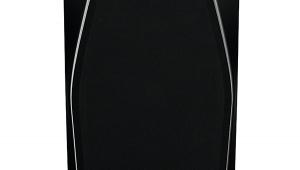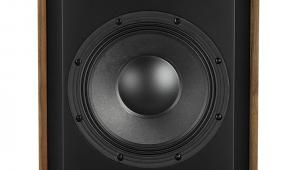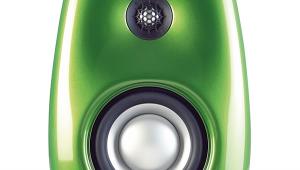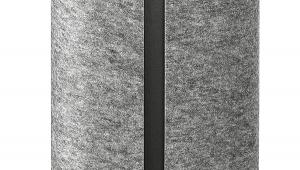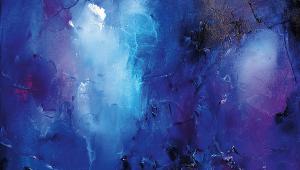Canton Reference 7 floorstander

 The slimmest of Canton’s new, five-strong Reference floorstanders blends style with established technologies
The slimmest of Canton’s new, five-strong Reference floorstanders blends style with established technologies
Calling your speakers ‘Reference’ is quite a bold statement, but then again making grand claims is not exactly unknown in the hi-fi industry! Canton’s Reference speakers – the top-tier of Germany’s largest loudspeaker manufacturer – is the product of a fierce R&D exercise and comes seven years after the previous flagship range, Reference K, was introduced. It’s a comprehensive series to boot, comprising six models of which only one is a standmount (the Reference 9) and all others are floorstanders.
But wait, there are even more Reference models, including the Reference Centre and a Reference Sub for home theatre surround set-ups. Add to that, at the 2023 High End Show in Munich, the brand presented its Reference GS, a €25,000 speaker weighing 155kg a piece. This was a limited-edition homage to company founder Günther Seitz, but in turn led to the High End 2024 introduction of the Reference Alpha 1 and Reference Alpha 2 – both priced well above the regular Reference models. To top it all off, there’s an active, wireless version of the Reference 5, which ties into Canton’s versatile ‘Smart’ platform.
Uniform Behaviour
All in all, there are 11 Reference models (not counting the GS edition), spanning a vast price range from £3800 per pair to well into five figures. Unusually, that means Canton’s entry level Reference models compete in different segments to its costlier speakers, vying with, for example, both B&W’s 700 and 800 series or KEF’s R and Reference speakers. That was partly the case with the previous Reference K range too, but this was then split between models that had single and two-stage cabinets. Now, all the Reference models speak a more uniform design language.
Arguably, the £6250 three-way Reference 7 we have here is the most versatile member of the family. At 98cm tall, it isn’t a large floorstander, yet though it’s the junior model to the Reference 5, 3, 2 and 1, it still feels like a no compromise speaker. Shifting its 33kg carcass around certainly underlines that fact...
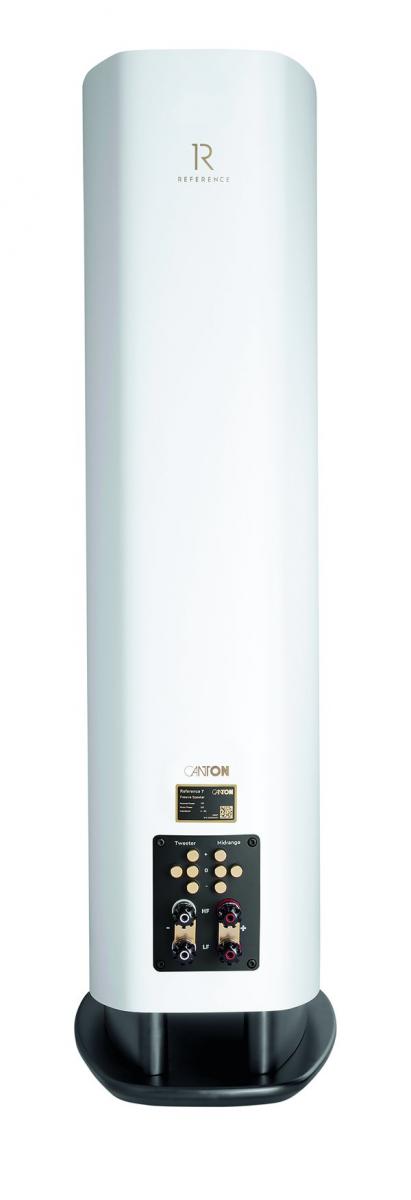
Two sets of 4mm WBT terminals serve both bi-amping/bi-wiring while a three-position link provides a broad (claimed) ±1.5dB cut/boost in bass and treble [see Lab Report, adjacent]
In The Round
As explained by chief designer Frank Goebl when I visited the Canton factory in the autumn of 2023, the new References are a root and branch refresh. That’s immediately apparent, as the Reference 7 looks totally different from the preceding Reference 7K [HFN May ’22], being a lot curvier and contemporary-looking than previous efforts. That’s especially true for the satin white version seen here, the matt finish contrasting smartly with the black base, softening the visual impact in a living room with, for example, wood and earth tones. The high gloss black version is a looker too while the third, varnished walnut, option shows off a unique wood veneer pattern. Being more difficult to produce, the latter finish is a little costlier, coming in at £6650.
The new industrial design goes hand in hand with the acoustic choices made by Canton’s designers. This includes the decision to flush mount the bass drivers, midrange and tweeter into a rounded baffle that seamlessly continues on to the sides and rear. It makes for a sleek, alluring appearance where even the lower part of the cabinet slopes up at the back to expose more of the black base. The speaker is ported at the bottom, facing a base plate that opens at the front and back. This should make room placement easier.
Typical for Canton are the tuning options at the rear, located just above the split WBT terminals, where moving the jumpers off the default position allows for a claimed ±1.5dB shelving of the treble and midrange. Goebl and his team like to use aluminium drivers stiffened with a ‘ceramic’ layer, but the technique is taken to a new level here with what’s described as a ‘black ceramic tungsten’ (BCT) coating added chemically to the cone of the 154mm midrange situated above the tweeter and to the two 154mm woofer cones below. The black colour is probably an aesthetic choice [see HFN Nov ’23], but BCT is said to improve internal damping. Another feature of the Reference range is the use of subtly asymmetrical waveguides to better control the speaker’s off-axis response.
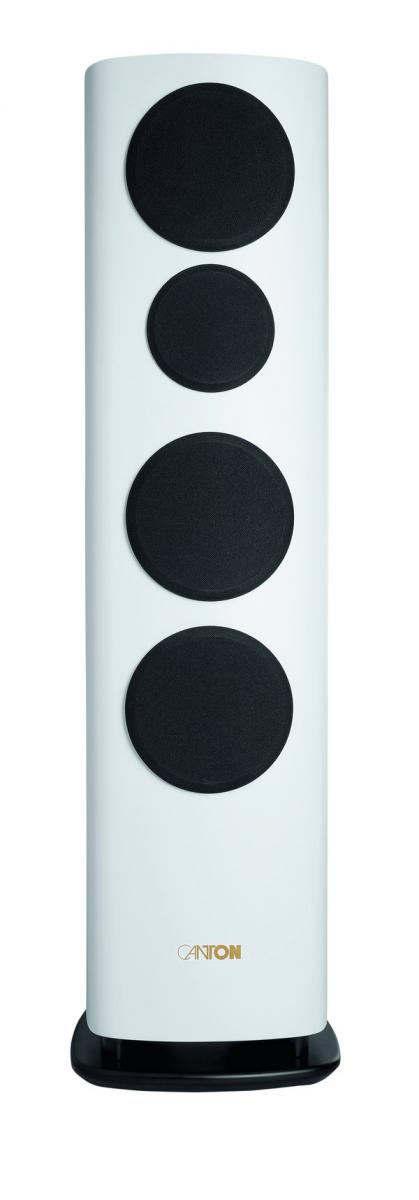
Offered in White Satin, Black Piano and Walnut finishes, the Reference 7’s ‘multilayer laminate’ cabinet hosts a 25mm dome tweeter, a 154mm midrange and matching pair of 154mm bass drivers, the latter reflex-loaded via a downward-firing port onto an integral plinth
High Roller
Laidback or ‘slow’ this speaker isn’t. The Reference 7 loves the high dynamics of orchestral works, powerful rock anthems or driving electronica, provided the music is channelled via a suitably capable amplifier. This is partly the result of its commanding (mid)bass extension, which Canton has always prioritised but has refined and tightened up here. It makes a great foundation for its lush lower midrange that, in turn, encourages long and engaging listening sessions. However, as PM notes in his Lab Report, it’s best to experiment with toe-in to find just the right level of treble bite – spend a little time setting up these speakers and you’ll be rewarded with a warmer but still detailed sound.
Fly Or Die Fly Or Die Fly Or Die ((World War)) [International Anthem Recording Company; 48kHz/24-bit] – and try to say that five times in rapid succession after a few pints – is the final release of Chicago-based Jaimie Branch, who tragically died of an overdose two years ago. This album suggests that the world lost a very talented musician at the beginning of a promising trumpet-playing career. She appeared also to have been a gifted composer, as the excellent recording of ‘Borealis Rising’ on this album demonstrates.
Making It Big
The Reference 7s are eminently suited to this kind of big band, big dynamics music. Driven by a Primare PRE35 Prisma (with DM36 DAC) and A35.8 multichannel amp, they revealed all the nuances of Branch’s virtuoso trumpet playing. She pushed the limits of the brass on this recording, which was presented with a palpable energy by the Reference 7s – though not enough toe-in might make it sound a tad aggressive.
That was true for ‘Burning Grey’, a chaotic yet catchy composition that sees Branch alternate shrill trumpet tones with improvised lyrics. Still, it’s an impressive performance, with the rest of the band positioned broadly across the stage and lots of percussive thrills delivered along the way. The solo cello halfway through ‘Borealis Rising’ was a high point too, the Reference 7s ensuring it sounded textured and authentic.
Spinning the vinyl release of MORE D4TA from Moderat [Monkeytown Records MTR122LP] on a Pro-Ject X2 B [HFN Sep ’22] with an Ortofon Quintet Red and routed through a Primare R15 phono preamp, the Reference 7s got a chance to show off other talents. Compared to this Berlin band’s earlier efforts, the techno soundscapes on this set are darker and more sluggish. An exception to the rule is the more conventional ‘Neon Rats’, which builds up nicely on the Reference 7s to a climax that soared from the speakers, sprinting into the room. And when the track suddenly switches back to a subdued beat, punctuated by synthesiser sounds, the abrupt transition was realised by the Reference 7s as if turning on a sixpence.
Full Bodied
While savouring grand orchestral works through the Reference 7s is a joy, it’s important to reflect on how these speakers might deal with more delicate pieces of music, such as Schubert’s String Quintet; Quartettsatz [CHAN 10978; 96kHz/24-bit]. Recorded with The Brodsky Quartet in honour of the group’s fiftieth anniversary, this is chamber music at its best, played by talented musicians who – very unusually for a quartet formation – never perform sitting down.
The last track here, ‘D 703 Quartettsatz’, nicely illustrates where the Reference 7s excel. With two violins, viola and cello varying between quiet and loud, these new Canton speakers show themselves capable of nimbly handling rapid changes and runs. Although this isn’t the ultimate recording of a cello, the Reference 7s exposed the deep vibrations of the instrument’s body, with a hint of warmth to make it really engaging. I do not choose that word lightly, as putting emotion into music is exactly what these floorstanders do incredibly well.
Hi-Fi News Verdict
The Reference 7 may ‘only’ be the smallest floorstander in Canton’s reinvigorated top-of-the-line range but it’s still a very solid performer that easily fills larger rooms. Introducing a radical but
pleasing industrial design and embodying new ‘acoustic smarts’,
the Reference 7 is a capable performer that, while extracting the finer points of recordings, really excels at communicating power, dynamics and thrills.
Sound Quality: 85%












